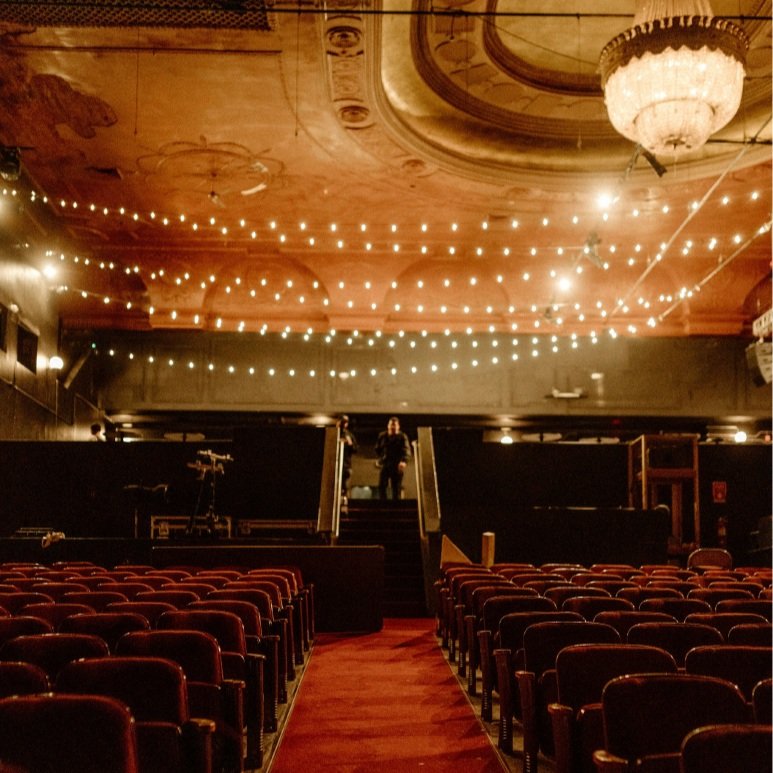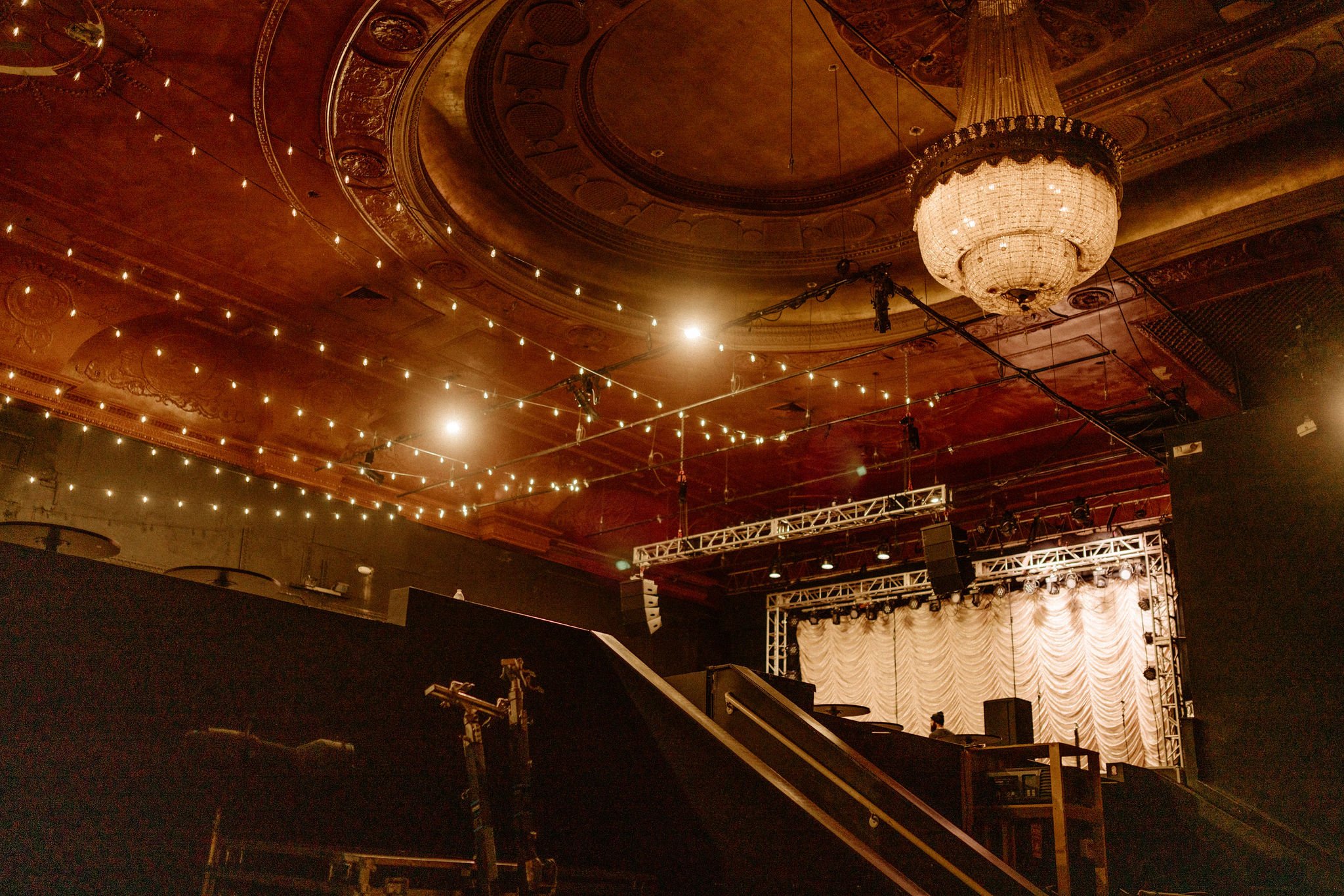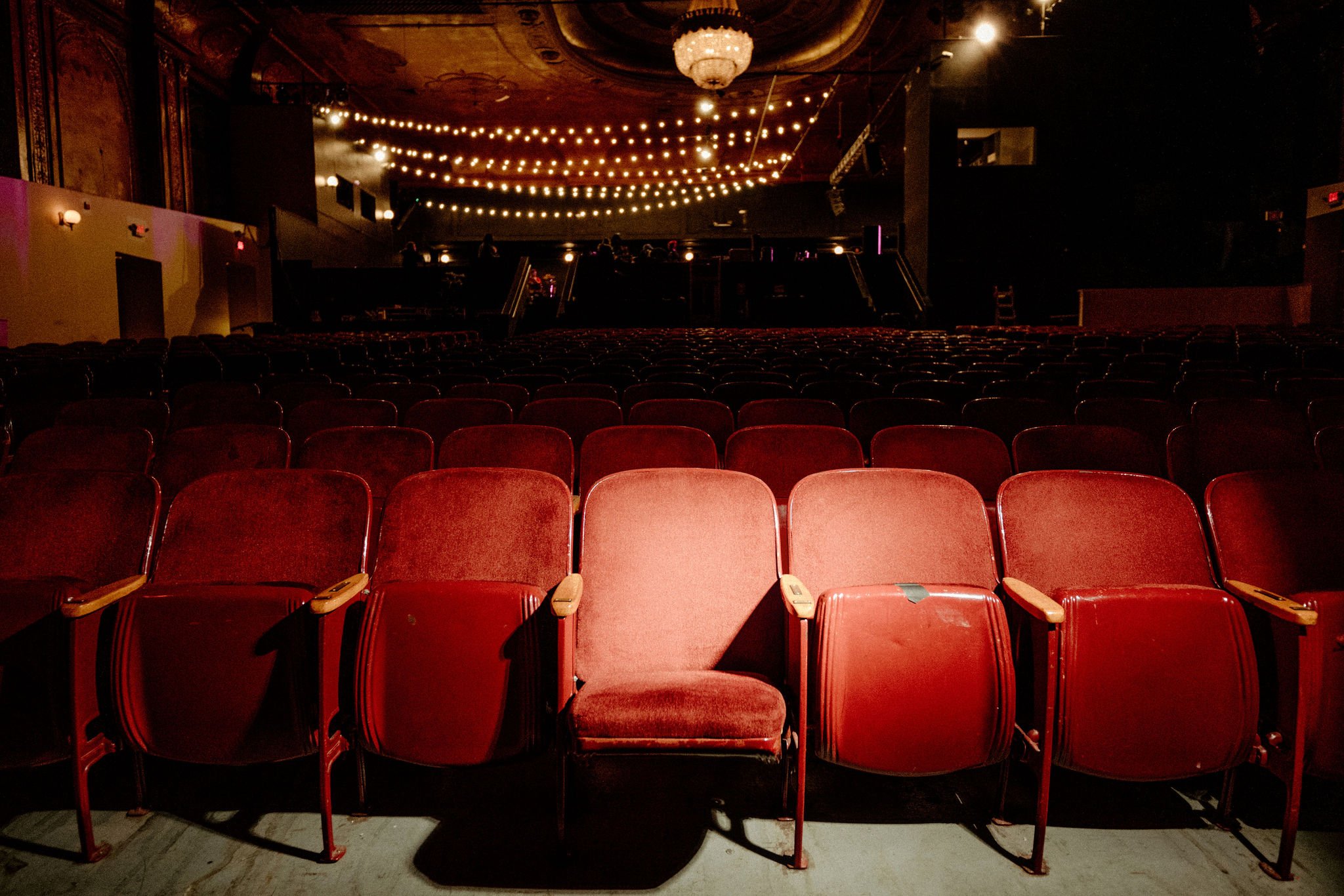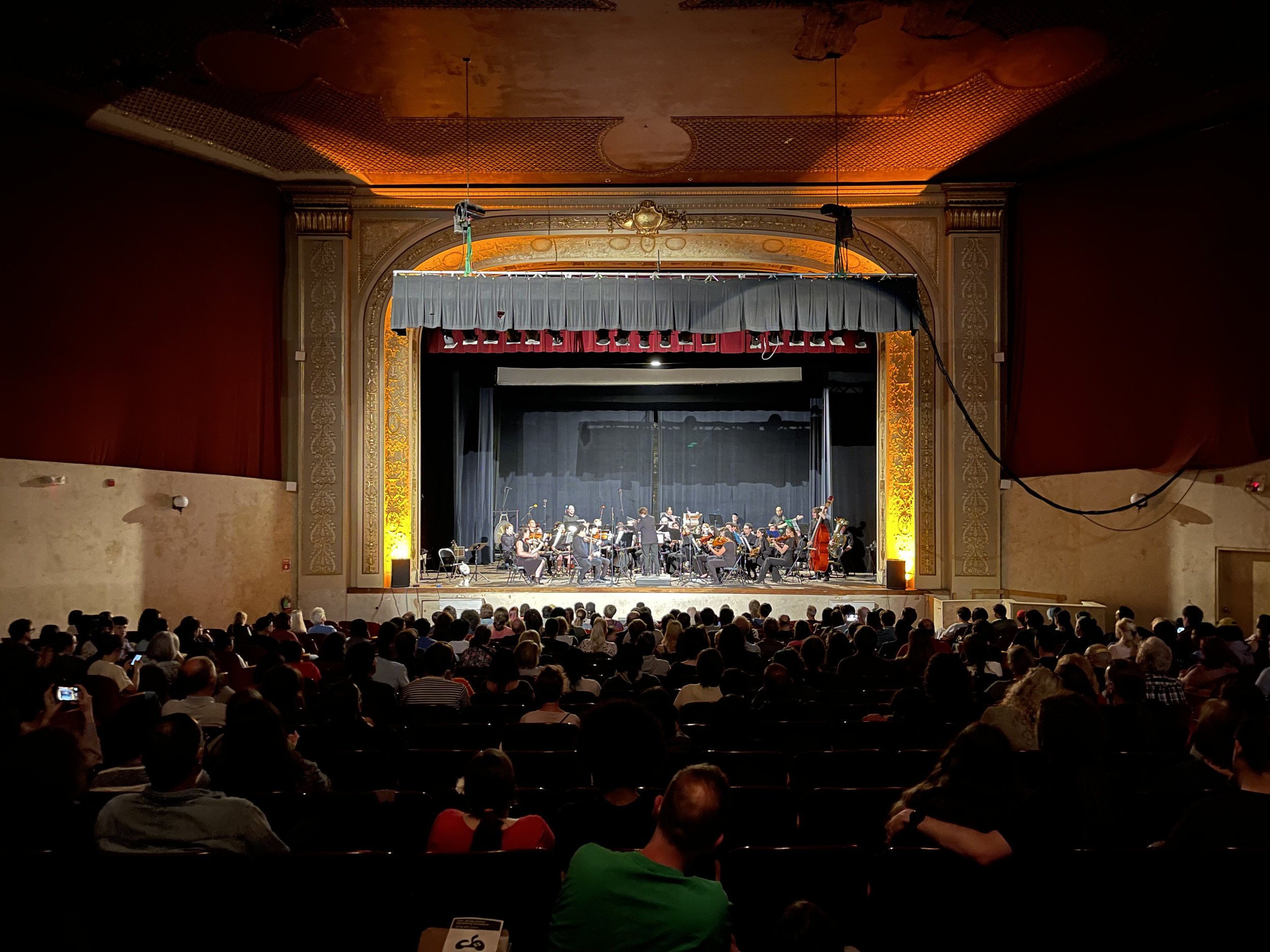The Chandelier
Words by Orlando Callegari Jr.
Go to the Rivoli Theater one day, preferably when no one else is around, and call out. Listen to the echo. Listen to that reflection of sound.
Almost five decades ago, on Sunday, January 9th, 1977, a fire scorched the Rivoli Theater (the original name of what is now the Williams Center) lobby. The blaze started the previous night and raged into the early morning. It took 125 firefighters five hours to squelch the flames. Emergency responders never discovered the cause.
The chandelier in the Rivoli Theater had been a literal fixture since the building’s completion in 1922 when the structure was created to house vaudeville acts. At 8 feet wide and 12 feet high, the collection of 62,000 prisms of Czechoslovakian crystal and colored lights dazzled audiences ever since its placement in center of the auditorium. The loss of such an iconic installation would have been more devasting than any other single object in the theater.
Built by Harry Hecht and Daniel Reutschler, the theater offered its stage to many luminaries of the era, namely Abbott & Costello, Bert Parks, and Douglas Fairbanks. Once Thomas Edison’s “Invention Factory” started experimenting with moving pictures, the Rivoli eventually became one of the first theaters to show silent films.
The theater thrived for decades before the fire of 1977, hosting events like high school graduations and helping to usher in the early days of the blockbuster movie.
Rivoli in 1981
That fire destroyed almost one third of the building but miraculously left most of the Rivoli theater and the chandelier intact. The two-ton cluster of hand cut glass was darkened by the smoke of the fire but was otherwise left undamaged.
It took the efforts of a group of philanthropists (Fairleigh Dickinson, Peter and Sally Sammartino, Oscar Schwidetsky, Barry Dancy and Herb Cutter) and a donation of $200,000 from the State Commission of the Arts to save the theater from closure. When the Rutherford Planning Board took over the reconstruction of the Rivoli in 1979 they had their work cut out. But after three long years the theater reopened under the name the William Carlos Williams Center for the Performing Arts in 1982. On April 10th, 1985, the chandelier was once again installed where it now rests.
At the theater’s commencement then-Mayor Barbara Chadwick said, “It is just as beautiful as it ever was and it represents a good omen for the future.”
Today, the center contains two live theaters, three cinemas, and an open-air meeting gallery. At its heart, the Rivoli Theater chandelier remains.
The chandelier is the trademark of the Williams Center. It is a survivor and a fixture of both the theater and the community that surrounds it.
Next time you come to a show in the Rivoli look up at that chandelier and try to appreciate it for more than just an object made to reflect light.
Tickets for all events can be found at williamscenter.co.
For more information about The Williams Center and to arrange to speak to a company spokesperson, please contact Jordan Fried at 201-613-1844 or info@williamscenter.co






